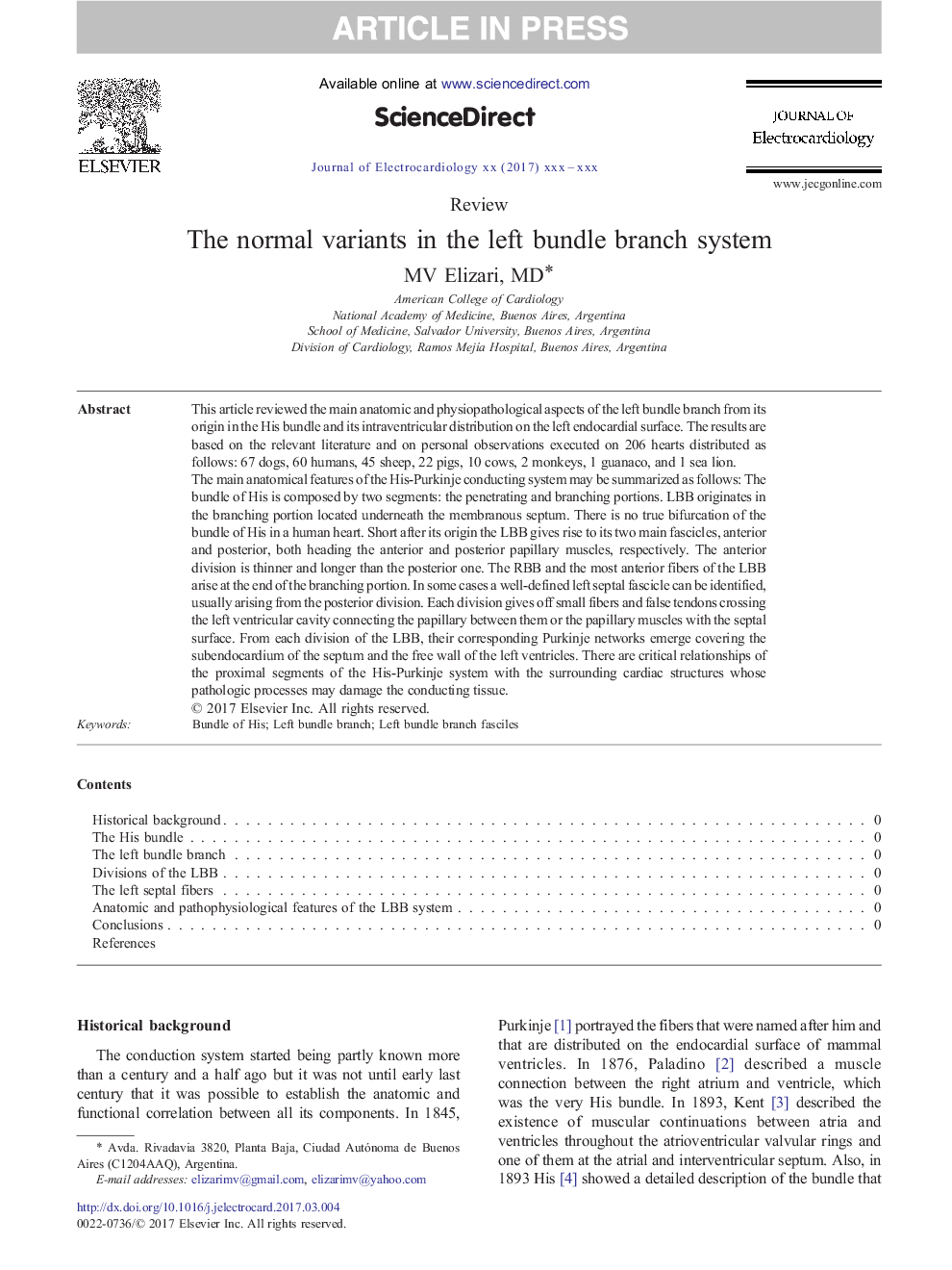| Article ID | Journal | Published Year | Pages | File Type |
|---|---|---|---|---|
| 5615476 | Journal of Electrocardiology | 2017 | 11 Pages |
Abstract
The main anatomical features of the His-Purkinje conducting system may be summarized as follows: The bundle of His is composed by two segments: the penetrating and branching portions. LBB originates in the branching portion located underneath the membranous septum. There is no true bifurcation of the bundle of His in a human heart. Short after its origin the LBB gives rise to its two main fascicles, anterior and posterior, both heading the anterior and posterior papillary muscles, respectively. The anterior division is thinner and longer than the posterior one. The RBB and the most anterior fibers of the LBB arise at the end of the branching portion. In some cases a well-defined left septal fascicle can be identified, usually arising from the posterior division. Each division gives off small fibers and false tendons crossing the left ventricular cavity connecting the papillary between them or the papillary muscles with the septal surface. From each division of the LBB, their corresponding Purkinje networks emerge covering the subendocardium of the septum and the free wall of the left ventricles. There are critical relationships of the proximal segments of the His-Purkinje system with the surrounding cardiac structures whose pathologic processes may damage the conducting tissue.
Keywords
Related Topics
Health Sciences
Medicine and Dentistry
Cardiology and Cardiovascular Medicine
Authors
MV MD,
